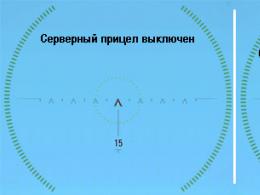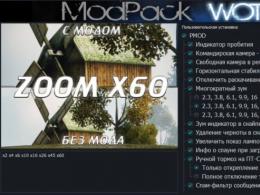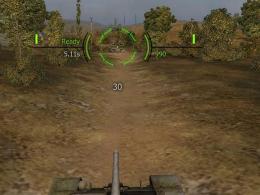What is Windows Explorer. Internet Explorer, what is this program and is it needed? About the Windows shell
Observing the list of processes in the Task Manager, not every user can guess which task the EXPLORER.EXE element is responsible for. But without user interaction with this process, normal operation in Windows is not possible. Let's find out what he is and what exactly he is responsible for.
You can observe this process in the Task Manager, to start which you should type Ctrl+Shift+Esc. The list where you can look at the object we are studying is located in the section "Processes".

Purpose
Let's find out why EXPLORER.EXE is used in the operating system. It is responsible for the work of the built-in Windows file manager, which is called "Conductor". In fact, even the word “explorer” itself is translated into Russian as “conductor, observer.” This process itself Conductor used in Windows OS starting from Windows 95.
That is, those graphic windows displayed on the monitor screen, through which the user navigates through the nooks and crannies of the computer’s file system, are the direct product of the activity of this process. It is also responsible for displaying the taskbar, menu "Start" and all other graphic objects of the system, except wallpaper. Thus, EXPLORER.EXE is the main element with which the Windows graphical interface (shell) is implemented.
But Conductor provides not only visibility, but also the procedure for the transition itself. It can also be used to perform various manipulations with files, folders and libraries.
Ending the process
Despite such a wide range of tasks that fall within the scope of responsibility of the EXPLORER.EXE process, its forced or emergency termination does not lead to the termination of the system (crash). All other processes and programs running on the system will continue to function normally. For example, if you are watching a movie through a video player or working in a browser, you may not even notice that EXPLORER.EXE has stopped functioning until you close the program. That’s when the problems will begin, because interaction with programs and OS elements, due to the actual absence of an operating system shell, will be greatly complicated.
At the same time, sometimes due to failures, to resume correct operation Conductor, you need to temporarily disable EXPLORER.EXE to reboot it. Let's see how to do this.


Start the process
After an application error occurs or a process is manually terminated, the question naturally arises of how to start it again. EXPLORER.EXE automatically starts when Windows starts. That is, one of the options is to restart Conductor is to reboot the operating system. But this option is not always suitable. It is especially unacceptable if applications that manipulate unsaved documents are running in the background. After all, in the event of a cold boot, all unsaved data will be lost. And why even restart the computer if it is possible to launch EXPLORER.EXE in another way.
You can launch EXPLORER.EXE by entering a special command into the tool window "Run". To call a tool "Run", you need to apply a keyboard shortcut Win+R. But, unfortunately, when EXPLORER.EXE is disabled, this method does not work on all systems. Therefore, let's launch the window "Run" via Task Manager.

If you just want to open a window Conductor, then just dial the combination Win+E, but EXPLORER.EXE must already be active.

File location
Now let's find out where the file that initiates EXPLORER.EXE is located.


The file we are studying is placed in the root directory of the Windows operating system, which itself is located on the disk C.
Virus substitution
Some viruses have learned to masquerade as the EXPLORER.EXE object. If in the Task Manager you see two or more processes with a similar name, then with a high probability we can say that they were created by viruses. The fact is that no matter how many windows there are Conductor was not open, but the EXPLORER.EXE process is always the same.
The file of the present process is located at the address that we found out above. You can view the addresses of other elements with the same name in exactly the same way. If they cannot be eliminated using a standard antivirus or scanner programs that remove malicious code, then this will have to be done manually.

Attention! Perform the above manipulations only if you are sure that the file is fake. In the opposite situation, the system can face fatal consequences.
EXPLORER.EXE plays a very important role in Windows OS. It provides work Conductor and other graphic elements of the system. With its help, the user can navigate the computer's file system and perform other tasks related to moving, copying and deleting files and folders. At the same time, it can also be launched by a virus file. In this case, such a suspicious file must be found and deleted.
Internet Explorer is designed for viewing Web pages. It supports all the new features introduced by Web page developers, including audio and video accompaniment of the displayed information.
In order to start working with Microsoft Internet Explorer, you need to launch it. Find the browser icon on your desktop and click on it. The home page will open.




On the toolbar of Microsoft Internet Explorer 6.0. There is a "Favorites" button. Clicking on it activates the left pane of the browser window. It presents all the sites added to “Favorites”. You can also perform some manipulations with them there. You can often find interesting sites on the Internet. And sometimes it can be difficult to remember his address. The “Favorites” panel will help us with this. To do this, activate the panel by clicking on the “Favorites” button, and add the current site to the “Favorites” list by clicking on the “Add” button
 A journal is a system that allows you to look at the progress of our journey on the Internet. Internet Explorer automatically records every Internet session. These entries, with links to each Web site we visited, are located in the Log folder. The easiest way to call it is to click on the “Journal” button (see figure) on the main browser panel.
A journal is a system that allows you to look at the progress of our journey on the Internet. Internet Explorer automatically records every Internet session. These entries, with links to each Web site we visited, are located in the Log folder. The easiest way to call it is to click on the “Journal” button (see figure) on the main browser panel.
There are options for using hotkeys. In this case, it is the CTRL+H key combination to launch the Journal.
The most used Russian search engines.
Google(http://www.google.com). Yahoo!(http://www.yahoo.com). Rambler(http://www.rambler.ru), http://mail.ru/
We took a quick look at the Windows file organization. Now let's get acquainted with the file system management tool - Windows Explorer.
Windows Explorer is a file manager built into the Windows system itself. It downloads automatically during installation of the operating system. To run it you need to do the following:
- left mouse button click " Start" in the lower right corner of the desktop;
- In the menu that appears, hover over the option " All programs", a menu will appear with installed programs on your computer (initially there will be much less of them than in the figure);
- hover over " Standard";
- In the menu that appears, left-click on the item " Conductor";
- The Windows Explorer start page will appear in front of you.
By default, the folder usually opens is " My Documents":

The Explorer window consists of the following parts:

I think it won’t be difficult to understand how the Explorer works. The developers tried to make everything as clear and visual as possible. Let's see what is included in the information field of our computer. To do this, left-click the “Folders” button in the toolbar, and then click the “My Computer” link located in the left window:

At the very top of the window there are folders in which documents created by the user are saved by default (primarily, this applies to documents created using Microsoft Office).
Below is a list of logical hard drives that are present on the computer. The hard drive is formatted during the installation of the operating system; as a rule, two logical drives are created: C and D. In this case, drive C is called system disk for the simple reason that it is on it that the operating system is installed. In order to view information about a logical drive, you need to right-click on it and select “Properties” in the context menu.

Below is a list of connected removable drives: floppy drives (outdated); card reader for connecting removable flash drives; CD drive; If a removable USB flash drive is installed in the computer, then it is also displayed. In short, ALL storage media currently connected to the computer are displayed here.
You can get from the “My Documents” window to the “My Computer” window in another way - using Address bar. To do this, do the following:
- Click on the leftmost green arrow on the Navigation Panel that says “Back”, and you will again be taken to the previous “My Documents” window;
- In the Addresses line, left-click on the small arrow located at the right edge of the line;
- In the list that appears, select "My Computer".
Sometimes Windows Explorer.lnk and other LNK system errors can be related to problems in the Windows registry. Several programs can use the Windows Explorer.lnk file, but when those programs are uninstalled or modified, sometimes "orphaned" (incorrect) LNK registry entries are left behind.
Basically, this means that while the actual path of the file may have changed, its incorrect former location is still recorded in the Windows Registry. When Windows tries to look up these incorrect file references (file locations on your PC), Windows Explorer.lnk errors can occur. Additionally, malware infection may have corrupted the registry entries associated with MSDN Disc 3613. Therefore, these corrupted LNK registry entries need to be fixed to fix the problem at the root.
Manually editing the Windows registry to remove invalid Windows Explorer.lnk keys is not recommended unless you are PC service professional. Mistakes made when editing the registry can render your PC inoperable and cause irreparable damage to your operating system. In fact, even one comma placed in the wrong place can prevent your computer from booting!
Because of this risk, we highly recommend using a trusted registry cleaner such as WinThruster (Developed by Microsoft Gold Certified Partner) to scan and repair any Windows Explorer.lnk-related registry problems. Using a registry cleaner, you can automate the process of finding corrupted registry entries, missing file references (such as the one causing the Windows Explorer.lnk error), and broken links within the registry. Before each scan, a backup copy is automatically created, allowing you to undo any changes with one click and protecting you from possible damage to your computer. The best part is that eliminating registry errors can dramatically improve system speed and performance.
Warning: Unless you are an experienced PC user, we DO NOT recommend manually editing the Windows Registry. Using Registry Editor incorrectly may cause serious problems that may require you to reinstall Windows. We do not guarantee that problems resulting from incorrect use of Registry Editor can be corrected. You use Registry Editor at your own risk.
Before you manually repair the Windows registry, you must create a backup by exporting a portion of the registry associated with Windows Explorer.lnk (for example, MSDN Disc 3613):
- Click on the button Begin.
- Enter " command" V search bar... DON'T CLICK YET ENTER!
- While holding down the keys CTRL-Shift on your keyboard, press ENTER.
- A dialog box for access will be displayed.
- Click Yes.
- The black box opens with a blinking cursor.
- Enter " regedit" and press ENTER.
- In the Registry Editor, select the Windows Explorer.lnk-related key (eg. MSDN Disc 3613) you want to back up.
- On the menu File select Export.
- On the list Save to Select the folder where you want to save your MSDN Disc 3613 key backup.
- In field File name Enter a name for the backup file, for example "MSDN Disc 3613 backup".
- Make sure the field Export range value selected Selected branch.
- Click Save.
- The file will be saved with extension .reg.
- You now have a backup of your Windows Explorer.lnk-related registry entry.
The following steps for manually editing the registry will not be described in this article, as they are likely to damage your system. If you would like more information about editing the registry manually, please check out the links below.
 Hello everyone Let's talk about a program like Internet Explorer, which is in every Windows, I will also tell you why it is needed. This means that Internet Explorer is a browser, but not everyone’s favorite, you can even say that it is the most NOT popular browser, although it is available in any Windows. For some reason no one likes it, no, well, of course there are those who use it, but many are still dissatisfied with it..
Hello everyone Let's talk about a program like Internet Explorer, which is in every Windows, I will also tell you why it is needed. This means that Internet Explorer is a browser, but not everyone’s favorite, you can even say that it is the most NOT popular browser, although it is available in any Windows. For some reason no one likes it, no, well, of course there are those who use it, but many are still dissatisfied with it..
And do you know why? Because Internet Explorer is a very slow browser, it’s not clear why it’s so slow even in Windows 10! Or did you think he wasn't here? It’s here, and it’s here, where has it gone? True, if I’m not mistaken, its development has been discontinued, because it was replaced by His Majesty Microsoft Edge, which is like a super-duper fast browser..
It's not all that simple though. The fact is that even when Microsoft Edge appeared, Internet Explorer was not removed from Windows. And it seems to me that this was done because Internet Explorer is not just a browser, it is a system program, the object of which can be used in another program. Well, that is, I mean that any programmer can write a program that will use Internet Explorer for its own purposes. And so that such programs work, and they exist, as it were, that’s why this browser remains in Windows 10.
This is what Internet Explorer looks like:

Supports almost everything that modern browsers do. However, such a little thing as Paste and go, well, when you copied the link, there is no such thing in this browser, it’s a jamb, it’s a jamb
By the way, do you know how to quickly launch Internet Explorer? I'll show you now! So press Win + R and write the following command there:

And that’s it, then click OK and that’s it, Internet Explorer will start! But if you write in the window not iexplore, but iexplore -private, then it will start immediately in private mode
Is it possible to uninstall Internet Explorer? Well, actually you can't. You can disable it at most using Windows settings. But you can still remove it, although it is a little dangerous.. Okay, let me first show you how to disable it. So look guys, right-click on the Start icon and select the topmost item there, that is, Programs and Features:

Now in the window there will be such a thing as enabling or disabling Windows components, so click this:

A window will appear, here you need to find Internet Explorer 11 and uncheck it:

When you uncheck the box, the following message will appear, then click Yes:

Then click OK and there will be a window like this to search for some files, well, it’s like turning off Internet Explorer:

And then you will need to restart the computer again, well, in short:

I advise you not to postpone the reboot, but to complete the job
Then I tried to launch Internet Explorer and this is the error I saw, as if it had actually been deleted:

But the Internet Explorer folder in Program Files still remains, here are its contents:

That is, you see, there is no iexplorer.exe file, but it is this file that launches the browser! There is no file in either just Program Files or Program Files (x86). That is, it smells like a real shutdown and one might even say deletion, because the browser cannot be launched and the main file, that is, iexplorer.exe, then it is not there, but this is essentially the browser.. These are the pies guys
Well, now about removing Internet Explorer. If you want to delete it, I'll show you how to do it, you can try it too. But before deleting, so to speak, for a better effect, well, I’ll write just in case, before deleting, it’s better for the browser to be disabled. Well, that is, as I showed above, through Windows components.
Before deleting, be sure to make a restore point first. But why create this point and how to do it at all? I already uninstalled a system program called MSXML 4.0 SP3 Parser once, and to avoid any mistakes, I first created a restore point just in case. I wrote about this to everyone here, I advise you to take a look
So, to be honest, I don’t know whether I will be able to remove Internet Explorer or not, but I hope that it will work out, and now I will do it. First, we need the Unlocker utility; we can’t do without it. You can easily find it on the Internet, because the utility is quite well known. It seems that this is the official website from where you can download the utility, there is even a portable version.
Just be careful when you install it, some other left-handed program is often installed along with it, so be careful and look for the presence of left-handed checkboxes when installing. When I installed Unlocker for myself, there was this checkbox for installing some incomprehensible leftist:

So, I installed the Unlocker utility, so what do we do now? What we’ll do is delete the Internet Explorer folder from both Program Files and Program Files (x86). The Unlocker utility was created just for such things; it can delete things that, in principle, cannot be deleted. Therefore, be careful with Unlocker and do not delete anything unnecessary, otherwise there will be glitches later and Windows will suddenly not boot!
So, let's go first to this folder:
C:\Program Files
Right-click on the Internet Explorer folder and select Unlocker:

That's it, then you need to select Delete from the menu and click OK:

After this, the Internet Explorer folder should be successfully deleted:

Now you do the same with the Internet Explorer folder that is located in Program Files (x86), that is, you also delete it using Unlocker.
After I deleted it, I rebooted to check that everything would work as it should. Windows turned on, folders opened normally and without glitches, that is, Explorer worked as expected. The fact is that I uninstalled Internet Explorer in Windows 7 in the same way, but there was a jamb, then all my folders opened in a new window, this doesn’t seem to be the case here.
I hope that you understand that it will not be possible to return Internet Explorer back. Because we removed it by the roots. Although, on the other hand, you can not delete the Internet Explorer folders, but move them somewhere so that later you can put them back if necessary. And then all that remains is to enable the component, well, in that Windows Components window, and it is quite possible that Internet Explorer will be restored. But maybe it won't work. In general, you should definitely make a restore point before deleting.
Well, that's all guys, now you know not only what kind of Internet Explorer program this is, but also how to remove this program. I hope everything was clear to you, good luck in life and that everything goes well for you
20.11.2016




